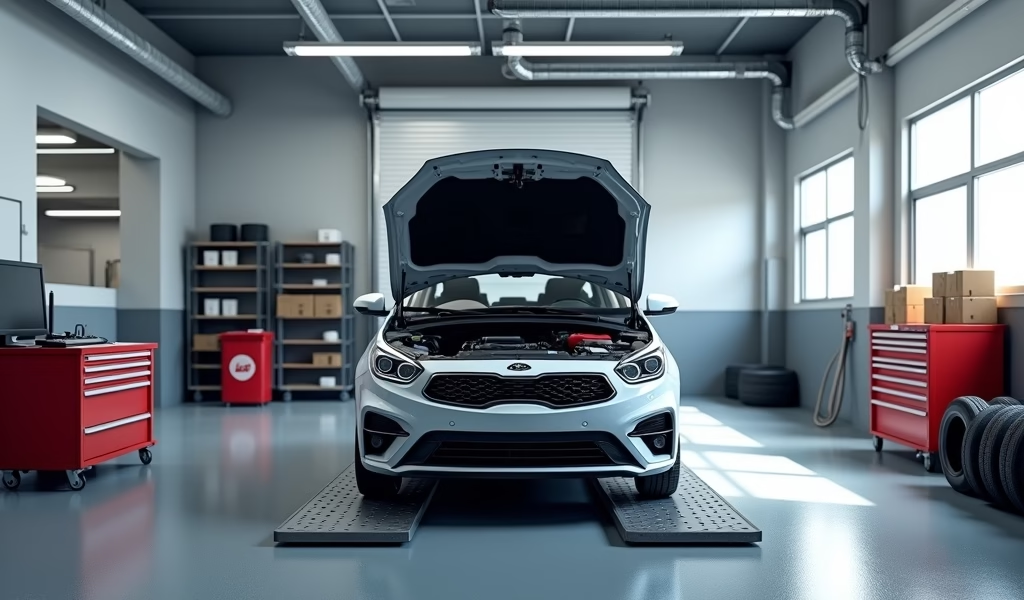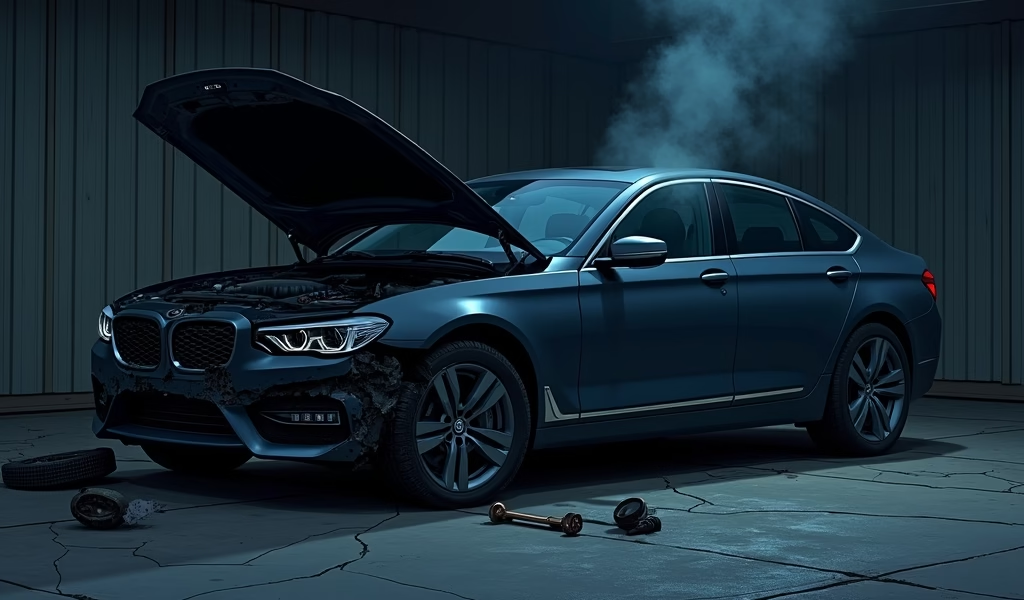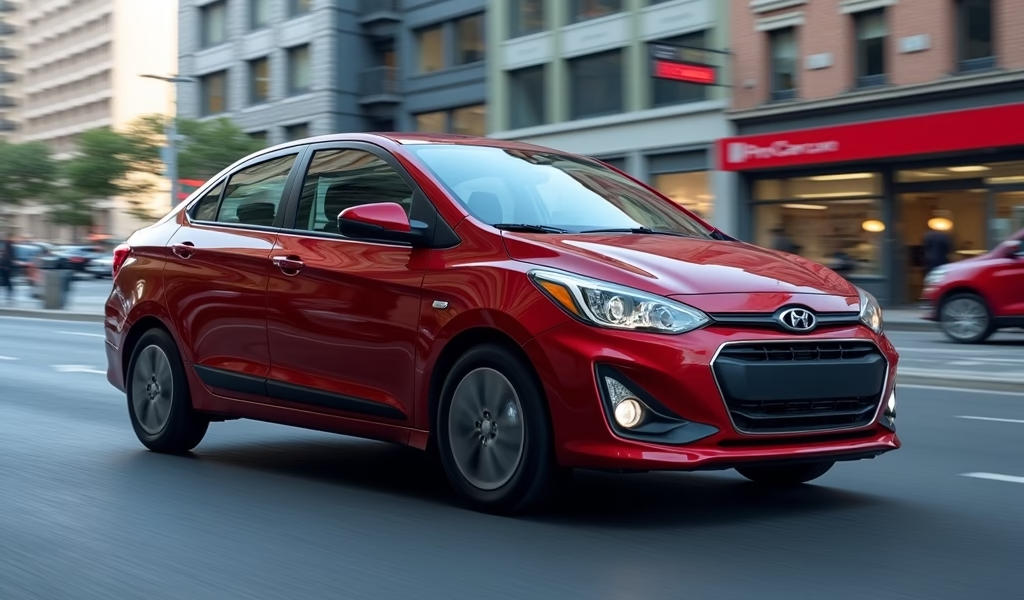Overview
This guide offers strategies for finding affordable car insurance without sacrificing protection, including understanding coverage basics, leveraging discounts, comparing companies beyond price, and maintaining low premiums long-term. The article emphasizes that proper insurance is an investment in financial security rather than just another expense, with tailored advice for different driver situations from teens to seniors.
Table of Contents
- Understanding Car Insurance Basics
- Factors Affecting Insurance Rates
- Finding Affordable Coverage Without Sacrificing Protection
- Discount Opportunities You Might Be Missing
- Comparing Insurance Companies: Beyond the Price Tag
- Maintaining Low Premiums Long-Term
- Special Situations and Solutions
- Conclusion
- Frequently Asked Questions
Understanding Car Insurance Basics
Finding the cheapest car insurance car options doesn’t have to mean skimping on coverage. As someone who’s spent over two decades working with vehicles and helping customers navigate insurance issues, I’ve seen firsthand how proper coverage protects not just your car, but your financial well-being too.
Car insurance might seem like just another bill, but it’s actually a critical shield for your wallet. Think of it as preventive maintenance for your finances – a small, regular investment that prevents catastrophic expenses down the road.
The foundation of any car insurance policy includes several types of coverage:
- Liability coverage – Pays for damage you cause to others (required in most states)
- Collision coverage – Repairs your vehicle after accidents regardless of fault
- Comprehensive coverage – Protects against theft, vandalism, weather damage, and more
- Personal injury protection – Covers medical expenses for you and your passengers
- Uninsured/underinsured motorist coverage – Protects you when the other driver lacks adequate insurance
State requirements vary, but most only mandate liability coverage at minimum levels. However, driving with only minimum coverage is like using worn brake pads – it might work for a while, but when you really need it, the protection may fall short.
The good news? You can find affordable coverage that doesn’t leave you vulnerable. As we dive deeper, I’ll share insider knowledge on balancing cost with proper protection, just as I would if you were standing in my shop asking for advice.
Factors Affecting Insurance Rates
Insurance rates aren’t random numbers plucked from thin air. They’re calculated using sophisticated algorithms that assess risk – much like how we diagnose cars using computer systems rather than just gut feelings.

The vehicle you drive significantly impacts your rates. Generally, affordable, modest cars cost less to insure than luxury or high-performance vehicles. This is because repair costs, theft rates, and safety records all factor into the equation.
Your driving history acts like your car’s service record – it tells insurers what to expect. Clean records (no accidents, tickets, or claims) typically earn lower premiums, while incidents raise red flags about potential future risk.
Location matters too. Urban drivers usually pay more than rural ones because of higher accident, theft, and vandalism rates – similar to how city driving puts more stress on your vehicle than country cruising.
Age and experience correlate strongly with risk. Young drivers pay substantially more because statistics show they’re more likely to be involved in accidents, just like how new parts generally perform better than those with 200,000 miles of wear.
Credit history affects rates in most states. Insurance Information Institute research shows correlation between credit scores and claim likelihood, making good credit another way to access cheaper rates.
Annual mileage makes perfect sense from an odds perspective – more time on the road means more exposure to potential accidents. If you’re driving less these days, make sure your insurer knows it.
Coverage levels and deductibles directly impact premiums. Higher deductibles mean lower premiums but more out-of-pocket expense when filing claims. Think of it as the financial version of preventive versus reactive maintenance.
Finding Affordable Coverage Without Sacrificing Protection
Finding the cheapest car insurance car options requires a strategic approach, just like troubleshooting a complex engine issue. Start by determining your specific needs rather than accepting generic packages.
For older vehicles, consider whether comprehensive and collision coverage make financial sense. If your car’s market value has significantly depreciated, the maximum payout might not justify the premium. I’ve advised many clients with vehicles worth under $3,000 to consider liability-only coverage and put the savings toward an emergency fund.
Shop around methodically. Different insurers weigh risk factors differently – one company might penalize your vehicle model heavily while another specializes in covering it affordably. Getting quotes from at least three providers creates a baseline for comparison.
Consider usage-based insurance programs if you drive infrequently or defensively. These programs use telematics devices to monitor actual driving habits rather than relying on demographic assumptions. Safe drivers with low mileage often see substantial savings with these programs.
Bundling policies creates efficiency for insurers that typically translates to customer savings. Combining auto insurance with homeowners or renters policies often reduces premiums by 10-15%, similar to how addressing multiple maintenance issues in one shop visit saves on labor costs.
Higher deductibles instantly lower premiums, but require honest assessment of your emergency funds. If you can comfortably cover a $1,000 deductible rather than a $250 one, the premium savings might make sense for your situation.
Pay-in-full discounts can save you 5-10% if you can afford to pay your six-month or annual premium upfront rather than monthly. This eliminates installment fees and administrative costs for the insurer.
Review your coverage regularly as circumstances change. When I service vehicles, I often notice customers carrying coverage that no longer matches their needs – like maintaining comprehensive coverage on vehicles they rarely drive or carrying high medical payments coverage when they already have excellent health insurance.
Discount Opportunities You Might Be Missing
Insurance discounts are like finding those hidden maintenance issues that, once addressed, make everything run more efficiently. Most insurers offer numerous discount opportunities, but they won’t always advertise them prominently.
Safety features can significantly reduce premiums. Modern vehicles with advanced driver assistance systems (ADAS) like automatic emergency braking, lane departure warnings, and adaptive cruise control often qualify for discounts. These systems reduce accident likelihood, similar to how preventive maintenance reduces breakdown risk.
Defensive driving courses aren’t just for teenagers or traffic violators. Many insurers offer discounts to drivers of all ages who complete approved courses. These typically cost $25-50 and can save you hundreds over several years while refreshing your driving skills.
Professional and membership discounts are widely available but rarely promoted. Teachers, military personnel, government employees, alumni associations, and professional organization members often qualify for special rates. Even Chevy car owners might find brand-specific discounts through certain insurers.
Good student discounts can substantially reduce premiums for young drivers, who otherwise face the highest rates. Maintaining a B average or better typically qualifies students for 10-15% savings, acknowledging the correlation between academic responsibility and driving responsibility.
Loyalty discounts reward customers who stick with one insurer, but don’t let these prevent you from shopping around. Sometimes switching providers saves more than loyalty discounts – similar to how brand loyalty in parts can sometimes cost more than choosing quality alternatives.
Paperless, automatic payment, and early renewal discounts might seem small individually, but combined can add up to meaningful savings. These administrative discounts typically save insurers money, and they pass some savings to you.
Usage-based discounts through telematics have evolved significantly in recent years. Beyond simply tracking mileage, modern programs analyze driving habits like acceleration, braking patterns, and cornering. Safe drivers can save 20-40% with these programs, though privacy concerns make them unsuitable for everyone.
Comparing Insurance Companies: Beyond the Price Tag
When searching for the cheapest car insurance car options, price matters – but it shouldn’t be your only consideration, just as the cheapest parts aren’t always the best value for your vehicle.

Financial stability should be a primary concern when selecting an insurer. Companies with strong financial ratings from agencies like A.M. Best, Moody’s, and Standard & Poor’s are more likely to remain solvent and pay claims even during economic downturns or after widespread disasters. Check these ratings before committing, especially to lesser-known providers advertising rock-bottom rates.
Claims handling reputation varies dramatically between insurers. Some companies are known for swift, hassle-free claims processing, while others may be more likely to dispute claims or delay payments. J.D. Power’s Auto Claims Satisfaction Study provides valuable insights into customer experiences during the claims process.
Customer service accessibility can make a huge difference when you need assistance. Does the company offer 24/7 support? Can you speak with a human quickly when needed? Are digital tools like apps and online portals user-friendly? These factors significantly impact your experience as a policyholder.
Coverage options and flexibility vary between insurers. Some companies offer unique coverages like original equipment manufacturer (OEM) parts guarantees, vanishing deductibles, or new car replacement policies. These specialized options might be worth paying slightly higher premiums if they align with your priorities.
Local vs. national insurers present different advantages. National companies typically offer more digital tools and wider coverage areas, while regional insurers often provide more personalized service and better understanding of local conditions. For some drivers, working with an agent who knows them personally is worth a small premium difference.
Discounts and programs should align with your situation. Companies differ dramatically in the discounts they offer and how substantial those discounts are. A company that heavily discounts factors relevant to your situation (like clean driving record or low mileage) might offer better value than one with a lower base rate but fewer applicable discounts.
When you’ve narrowed down options based on these factors, conducting a true apples-to-apples comparison of quotes becomes easier. Ensure each quote reflects identical coverage levels, deductibles, and policy limits – otherwise, price comparisons become meaningless, much like comparing repair costs without specifying parts quality.
Maintaining Low Premiums Long-Term
Finding affordable coverage is just the start – keeping your rates low requires ongoing attention, similar to how maintaining your vehicle prevents costly repairs later.
Driving habits directly impact insurance costs. Avoiding tickets and accidents is the single most effective strategy for maintaining affordable premiums long-term. Most insurers offer accident forgiveness for your first incident, but subsequent claims almost always trigger increases.
Credit management affects rates in most states. Maintaining good credit by paying bills on time, reducing debt, and monitoring your credit report for errors can prevent unexpected premium increases at renewal time.
Vehicle choices matter when replacement time comes. Before purchasing your next vehicle, check insurance costs – some models cost significantly more to insure than others due to repair costs, theft rates, and safety records. Even within the same make and model, optional safety features can reduce premiums.
Regular policy reviews ensure you’re not paying for unnecessary coverage or missing new discount opportunities. I recommend reviewing your policy at least annually and after major life changes like moving, adding teen drivers, or significantly changing your driving habits.
Increasing deductibles as your financial situation improves can provide ongoing savings. Many drivers start with lower deductibles due to limited emergency funds, but fail to increase them later when they could comfortably handle higher out-of-pocket costs.
Bundling additional policies as you acquire more insurable assets (homes, motorcycles, boats, etc.) typically increases multi-policy discounts. Consolidating with one insurer usually becomes more advantageous as you add policies.
Maintaining continuous coverage prevents lapses that typically result in significantly higher premiums when you reinstate insurance. Even a brief gap can eliminate discounts and favorable rating factors, similar to how skipping maintenance resets the clock on preventive care.
Special Situations and Solutions
Some drivers face unique challenges in finding affordable coverage. Let’s examine solutions for several common scenarios.
High-risk drivers with accidents, violations, or DUIs often face substantially higher premiums or even coverage denials from standard insurers. Specialized high-risk insurers, state-assigned risk pools, or gradually rebuilding your record through safe driving can help. Just as I’ve seen engines recover from severe damage with proper care, your insurance situation can improve with time and focused effort.
Teen drivers present perhaps the greatest insurance challenge for families. Beyond the obvious good student and driver training discounts, consider usage-based insurance, occasional driver status for college students, or having teens drive the family’s older, less expensive vehicle. Some insurers also offer specific teen driver programs with rate guarantees or forgiveness features.
Seniors sometimes face increasing rates despite decades of driving experience. Defensive driving courses designed specifically for mature drivers not only refresh skills but typically provide significant discounts. Some insurers also offer senior-specific programs acknowledging the value of experience.
Military personnel qualify for specialized insurance options through companies like USAA or through military discounts with mainstream insurers. Active deployment often qualifies for storage discounts when vehicles won’t be used, and some insurers offer policy suspension rather than cancellation during deployments.
Low-mileage drivers are often overcharged by traditional insurance models. Pay-per-mile insurance programs charge a small base rate plus a per-mile fee, potentially saving thousands annually for those driving less than 7,000 miles yearly. For extreme cases, like cars driven only a few hundred miles annually, some specialty insurers offer collector car policies with significant savings.
Non-standard vehicles like modified cars, classic cars, or high-performance vehicles often face excessive premiums from mainstream insurers. Specialty insurers understand these vehicles better and typically offer more reasonable rates along with appropriate coverage options like agreed value policies or coverage for modifications.
If you’re struggling to find affordable coverage for any reason, independent insurance agents can be invaluable resources. They work with multiple companies and understand which insurers are most likely to offer favorable rates for your specific situation. The best place to buy cheap cars isn’t always the best place for insurance – specialized knowledge makes a difference.
Conclusion
Finding the cheapest car insurance car options doesn’t have to mean compromising on protection or service. By understanding how insurance pricing works, strategically selecting coverages, taking advantage of applicable discounts, and comparing options beyond just the price tag, you can secure quality coverage at reasonable rates.
Remember that insurance is a long-term relationship that evolves with your life circumstances. Regular reviews, maintaining good driving habits, and staying informed about new options and discounts will help keep your premiums affordable year after year.
Just as I advise my automotive clients to balance immediate costs with long-term reliability, I encourage you to view insurance as an investment in financial security rather than just another bill. The cheapest option isn’t always the best value, but with the strategies outlined in this guide, you can find the optimal balance between affordability and protection.
For personalized advice specific to your situation, consider consulting with an independent insurance agent who can help navigate the complexities of coverage options and find insurers most favorable to your unique circumstances. And remember – the time invested in finding the right coverage at the right price pays dividends every month through lower premiums and provides peace of mind knowing you’re properly protected on the road.
Frequently Asked Questions
What’s the minimum car insurance I legally need?
Most states require liability insurance with specific minimum limits that cover damage you cause to others. These minimums vary by state but typically include bodily injury and property damage liability coverage.
Will my credit score affect my car insurance rates?
In most states, yes – insurers use credit-based insurance scores as rating factors because statistics show correlation with claims likelihood. Maintaining good credit can significantly lower your premiums in states where this practice is permitted.
How much can I save by increasing my deductible?
Increasing from a $250 to $1,000 deductible typically saves 15-30% on comprehensive and collision premiums. The savings percentage varies by insurer and your personal risk factors.
Does the color of my car affect my insurance rates?
No, this is a common myth. Insurers don’t consider car color when setting rates, though they do consider make, model, year, engine size, and vehicle value.
How often should I shop around for car insurance?
Compare rates at least every 1-2 years and after major life changes like moving, adding drivers, or improving your credit score. Loyalty doesn’t always pay when different insurers weight rating factors differently.


Pingback: What’s the cheapest car insurance? DIY! - knowsyourcar.com
Pingback: Cars with Cheapest Insurance: 4 Pro Tips - knowsyourcar.com